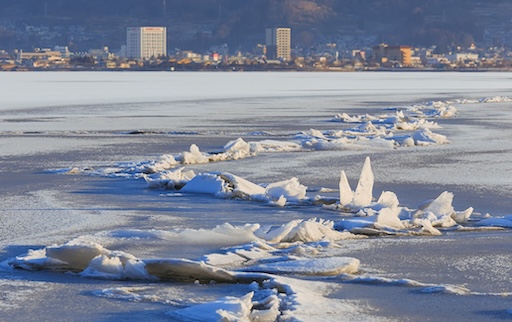
In the heart of Nagano, where winter drapes the land in quiet white, lies a lake that carries a divine footprint—or at least, that’s what generations of believers have whispered. Every January or February, when the surface of Lake Suwa freezes just right, something extraordinary happens. Great cracks zigzag across the ice, rising like a frozen wave from shore to shore.
Locals call it Omiwatari, which means “The Passage of the Gods.” According to legend, the gods themselves walk across the lake, leaving their path etched into the frozen surface. And while scientists may point to thermal stress and pressure ridges, the people of Suwa know better—this is divine movement in ice.
A Story Carved in Ice
The legend goes like this: two deities reside on opposite shores of Lake Suwa—Takeminakata-no-Kami and Yasakatome-no-Kami. In the dead of winter, when the lake hardens into ice, the male deity crosses the lake to visit the female. His journey forms a long, jagged trail in the ice—a visible sign of celestial romance.
These icy ridges can stretch several kilometers, standing up to 30 centimeters tall in places. Their appearance is unpredictable. Some years, Omiwatari doesn’t happen at all. But when it does, it’s more than just a natural event—it’s a divine message.
The Priests Who Read the Ice
At the Suwa Taisha Shrine, priests have recorded the appearance of Omiwatari for over 500 years. Each year, if the cracks appear, a sacred ceremony called Omiwatari Mishirabe is held. The priests walk along the ridges and “read” the path like a divine message—predicting the fortunes of the harvest, weather, and even political stability.
This practice is considered the oldest known phenological observation in Japan—where natural events are interpreted not just scientifically, but spiritually. It’s a rare blend of Shinto reverence and environmental awareness.
Frozen Beauty, Fleeting Wonder
Beyond legend, Lake Suwa in winter is breathtaking. Surrounded by snow-covered mountains and forests, the mirror-like lake freezes in silence. Mornings bring mist over the ice, and on some days, you can hear loud, echoing booms—nature’s voice as the ice expands or contracts.
If you're lucky enough to witness Omiwatari forming, it’s almost cinematic: slow movement, cracking echoes, and ridges pushing upward in real time. It feels less like nature, more like a ritual unfolding.
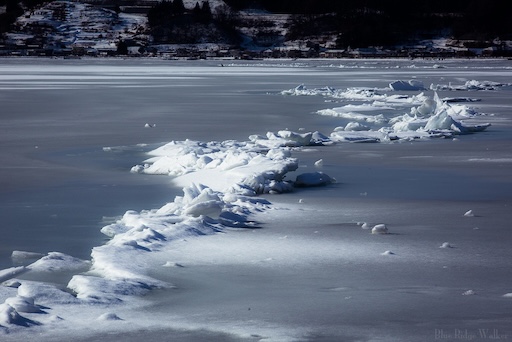
Is It Climate Change or Divine Silence?
In recent years, the Omiwatari has become rarer. Climate scientists warn that rising temperatures are shortening the freezing season. Where the phenomenon once appeared almost every year, it's now only seen sporadically—sometimes with gaps of several years.
For locals, this isn't just a shift in weather—it's a spiritual warning. "If the gods do not cross," one priest reportedly said, "perhaps they are displeased."
How to See It
Visiting Lake Suwa in winter is a serene experience, Omiwatari or not. The town of Suwa offers hot springs, ryokan inns, and panoramic views of the lake. The Suwa Taisha Shrine is worth visiting year-round, but in winter, its stillness feels especially powerful.
The best chance to witness Omiwatari is from mid-January to early February, though it depends entirely on weather conditions. Bundle up, bring patience, and remember—some wonders don’t perform on schedule.
Chasing the Divine
In an age of high-speed data and satellite weather models, it’s easy to forget the ancient relationship between nature and myth. But Lake Suwa reminds us: not everything needs an explanation. Sometimes a crack in the ice isn’t just physics—it’s the memory of a god who once walked through winter to reach someone they loved.
Share this story and inspire others.
Tags: Lake Suwa, Omiwatari, Crossing of the Gods, Frozen Lake Japan, Suwa Mythology, Nagano Travel, Japanese Legends, Chasing Hidden Wonder
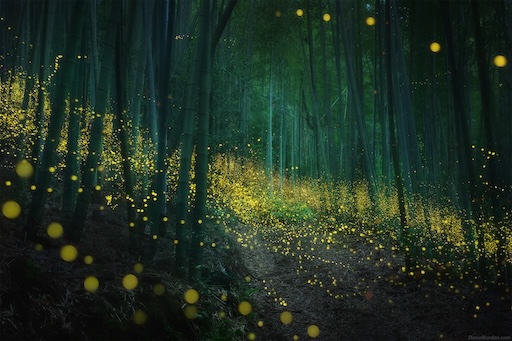 Firefly Phenomenon (Hotaru Season) – Magical Nights in Japan
Firefly Phenomenon (Hotaru Season) – Magical Nights in Japan
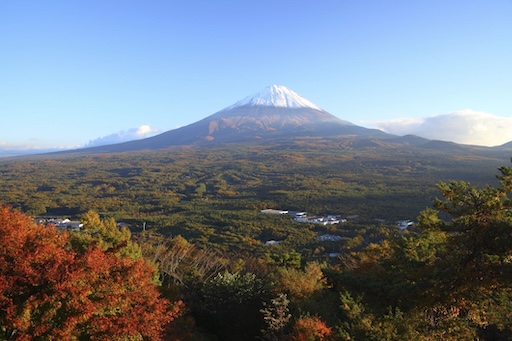 Aokigahara Forest – The Magnetic Silence of Mount Fuji’s Lava Woods
Aokigahara Forest – The Magnetic Silence of Mount Fuji’s Lava Woods
 The Sacred Corn Festivals – When Maize Becomes a God
The Sacred Corn Festivals – When Maize Becomes a God
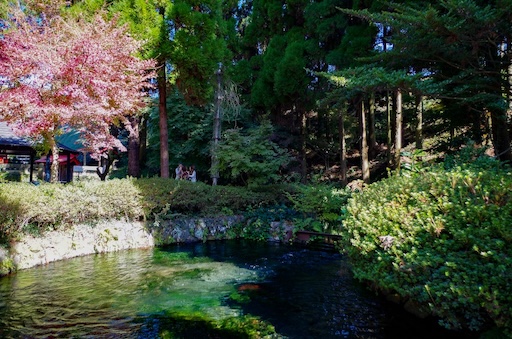 Shirakawa Suigen – Kumamoto
Shirakawa Suigen – Kumamoto
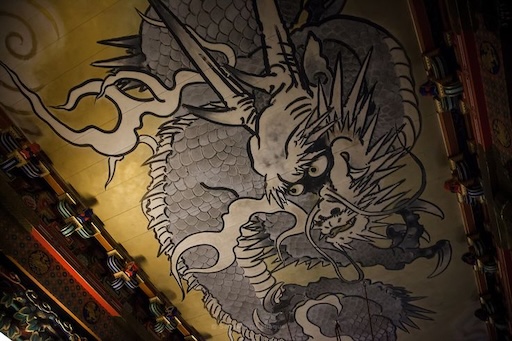 Nikko’s Crying Dragon – Tochigi
Nikko’s Crying Dragon – Tochigi
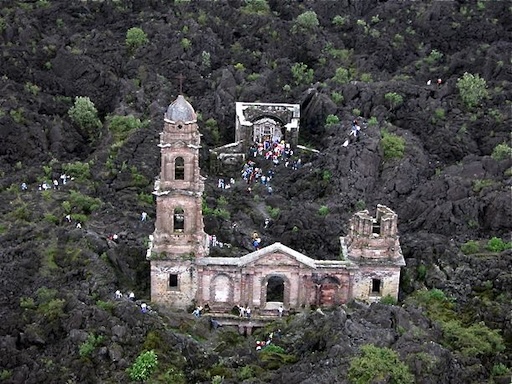 Paricutín Volcano – The Volcano That Was Born in a Cornfield
Paricutín Volcano – The Volcano That Was Born in a Cornfield
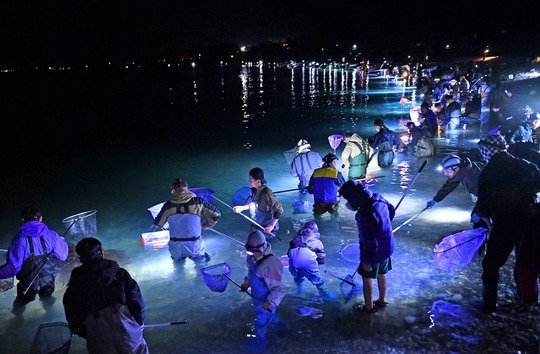 Bioluminescent Firefly Squid (Hotaru Ika) – Toyama Bay
Bioluminescent Firefly Squid (Hotaru Ika) – Toyama Bay